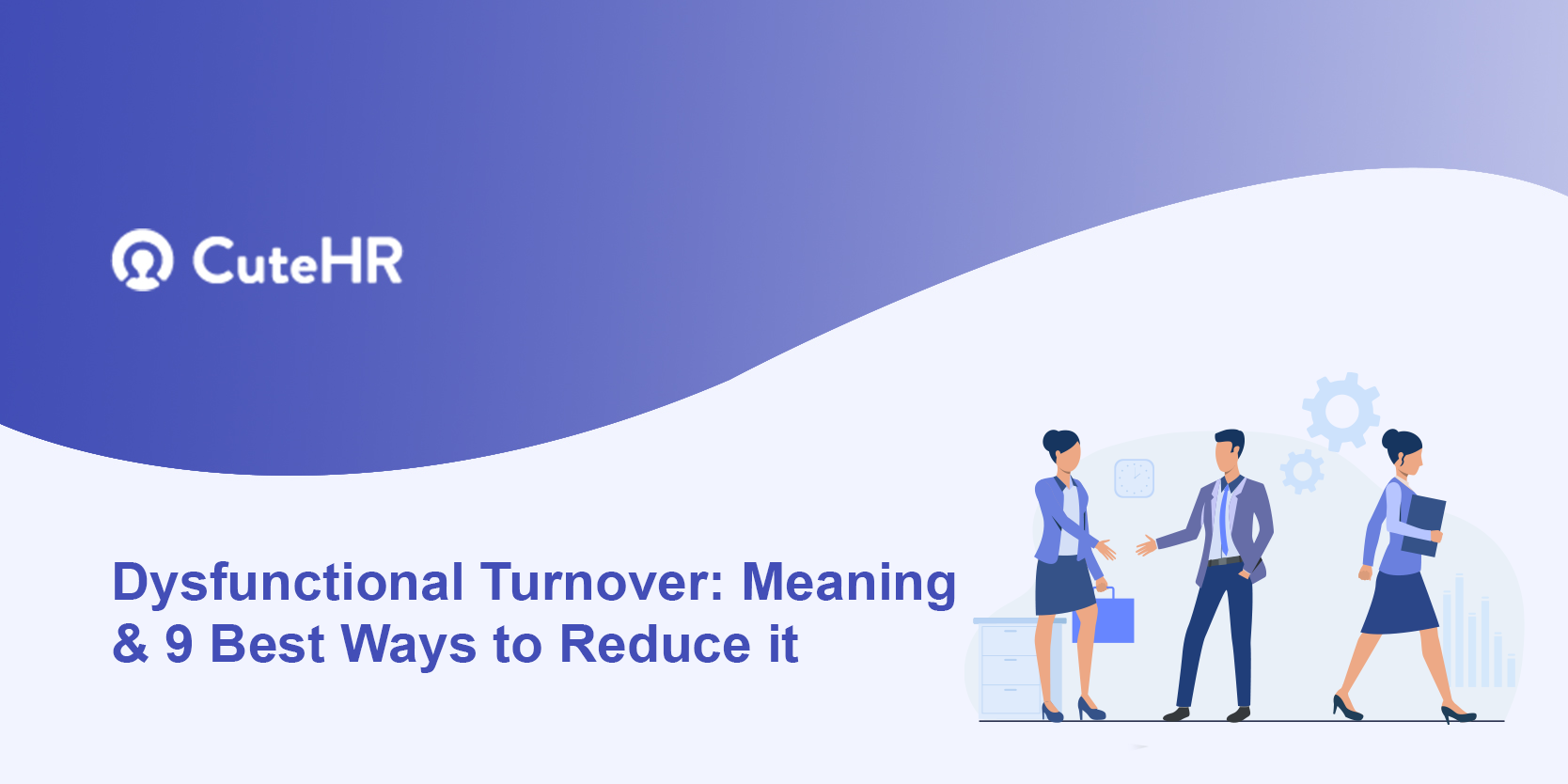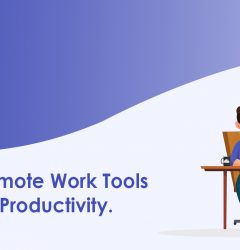18 Oct

Did you know? The probability of employees changing jobs is four times higher when they work with poorly rated managers.
Discipline in critical areas is required to keep your firm on a positive path. One of the most fundamental things is to keep talented and dedicated employees. Without some kind of consistency in your employment base, your firm is likely to suffer from vulnerability. As a result, one of the primary worries for business owners is turnover.
To a certain point, there is no avoiding dysfunctional turnover. This is a normal fluctuation that happens in every organization. However, you must ensure that it reflects a good balance. Enough turnover to guarantee you have new talent, yet enough retention to keep your organization stable. Problems develop when the balance tilts too significantly toward worker emigration.
Consequently, dysfunctional turnover is frequently not just inconvenient but also damaging.
The good news is that you are not helpless in the face of dysfunctional turnover. We’ll investigate the situation further. What is dysfunctional turnover, and what can you do to reduce its impact?
Table of Contents
What Is Dysfunctional Turnover?
By theory, dysfunctional turnover happens when your company’s good employees leave at a higher rate than its weaker ones. This is frequently seen as dysfunctional turnover due to the impact it has on your capital. In sum, it costs more to continually recruit and train new staff than it does to keep the best performers.
While the financial issues are the primary focus here, it is important to emphasize that they are not the entire problem. Dysfunctional turnover isn’t a concern only because it depletes your capital. It has far-reaching repercussions.
Types of Dysfunctional turnover
There are basically two types of dysfunctional turnover that occur when your dedicated employees leave your organization, which are as follows:-
Avoidable Turnover
Avoidable Turnover Improvements that can be done in an organization to maintain an employee are referred to as avoidable turnover. Low salaries, a complete absence of benefits and privileges, and discontent with work-life balance are a few characteristics of avoidable turnover that are as follows:-
1. Workplace Dissatisfaction
If the preferred employment is not available at the moment, a person could apply for a job. If the correct or preferable employment is available in another company, the workers can quit the organization instantly. Furthermore, the task may be difficult or unfamiliar to the employee in question. The job might also be hazardous, noisy, filthy, messy, humid, or unpleasant.
2. Unhappiness with Personnel Policies
Some organizations use autocratic administration. There is less room for advancement and pay raises. Transfer requests may be denied only after a thorough inquiry is granted leave.
3. Unhappiness with Income
Some organizations might pay minimal or low salaries. As a result, workers could become unsatisfied with their pay and leave the organization.
4. Dissatisfaction with the Workplace
Workers are asked to work under adverse lighting conditions. Furthermore, there is no appropriate ventilation. The hygienic situation is equally terrible.
5. An inadequate transportation system
The industry or workplace might well be located at a longer distance from their home. As a result, workers might just have trouble getting to work. However, the organization seems unconcerned about the workers’ transportation needs.
6. Work Hours Dissatisfaction
Workers are required to work longer hours than usual. Furthermore, there is no overtime compensation for extra hours worked. Workers are sometimes called even on holidays and at night. That might cause doubt in employee’s minds regarding the workplace
Unavoidable Turnover
Unavoidable turnover occurs when an employer can do nothing to keep an employee from resigning. Illness, death, retirement, relocation to another place, and family duties are some characteristics that are as follows:-
1. Physical Factors
The worker’s physical state prevents him from continuing to work. Workers may be forced to leave an organization due to bad health caused by working circumstances.
2. Marriages
Women who have married may be forced to quit the group. Furthermore, pregnancy might alter a woman’s mentality. If this is the case, they will undoubtedly leave the company.
3. Death and Retirement
Retirement and death are caused by old age. These are unavoidable factors. As a result, they discontinue the service in the organization.
4. Resignation or Transfer
Some employees may be terminated or expelled from the firm owing to inexperience, inefficiencies, inappropriate behavior, or disinterest in their jobs. Coworkers may not always get along with some employees. They may be referred to as “chronic kickers,” “disturbers,” or “troublemakers.”
5. Redundancy
Many factors can contribute to redundancy, including seasonal business, material shortages, a lack of preparation, and a lack of boldness and vision on the part of upper management.
Causes of Dysfunctional turnover
1. Overwork
Exhaustion occurs when individuals are forced to accomplish duties without being provided with the skills necessary to succeed, when they experience a sense of powerlessness, or when they continuously experience more daily stress than is tolerable.
Exhaustion is characterized by mental and physical tiredness, as well as a sense of hopelessness and self-blame, and it can appear in behavioral and medical problems.
Inquire whether we commonly request or expect staff to work on weekends or after hours. Is an “average” workweek Fifty hours or longer? Do we give the necessary technology and other resources that support individuals to succeed?
2. Limited feedback or recognition
Many employees report receiving limited to no feedback or appreciation from their managers.
Although feedback does not always have to be favorable, try to phrase remarks from a positive perspective. Supervisors should begin with successes, focusing on specifics, match encouragement with practical advice on how to address deficiencies, and have regular dialogues and check-ins.
Furthermore, feedback and recognition do not have to come just from the boss to have a significant influence. Community recognition programs are effective, especially when technology is used. For example, at Fisher Unitech, digitizing a manual kudos program enabled the firm to automate employee appreciation, making it more visible and smooth and increasing levels of engagement in the process.
3. Unsatisfactory compensation
Pay and incentives are a big reason why individuals quit a firm, especially younger workers: According to the LinkedIn poll, the top reason people change professions is for better pay and perks.
A higher base salary has a significant influence on recruitment for several reasons. To begin, paying employees properly is a practical approach to demonstrate that you respect their contributions. Furthermore, it makes it less likely that a rival seeking to recruit high performers would be capable of luring them away with simply economic rewards.
4. Toxic supervisors
There has been a lot written on toxic supervisors who steal credit for the suggestions of others, play favorites, and even abuse their employees. Organizations would surely screen out these individuals. Managers who are just terrible at their professions, on the other hand, are less visible.
Some of the main causes for turnover—are poor pay or work-life balance, insufficient training, and few prospects for improvement attributable to the management, so Human resource departments should identify supervisors who are incapable of managing people and either shift them to new jobs or give assistance and instruction.
The impact of dysfunctional turnover on your organization
When dealing with dysfunctional turnover, it is important to understand that high turnover costs are not your organization’s main issue. It is disruptive to many various elements of your organization, and organizations must attempt to decrease it if they want to compete in order to reach more customers. The following are some examples of the negative effects of dysfunctional turnover:
1. Knowledge loss
Employees’ expertise follows them regardless of whether they’re promoted, change departments, or retire. If they are still with your organization, you understand where to look for them aside from the documents they engaged on or the handovers they left behind. When an employee quits, there is no method to follow up when necessary, reducing the efficiency of your team.
2. Organizational image problems
When someone is dissatisfied with their employment and decides to quit, they typically discuss their experience with friends and relatives as well as on platforms such as LinkedIn. A poor image of the company might have a significant influence on your organization, contributing to higher staff turnover, lower motivation, and trouble attracting new personnel.
3. Hiring excellent talent is difficult.
High achievers have a tendency to attract additional high performers to your organization. And, when the top hires are gone in seven days, your team must move rapidly to hire them.
When good performers leave your organization, it becomes more difficult to recruit and hire replacements. There are several reasons for this, but knowing why your team is leaving, such as limited possibilities for advancement, failure to make a significant difference, and poisonous workplace culture, can assist you in recognizing why other high performers are scared off.
4. It becomes increasingly difficult to maintain a positive company culture
Having a good company culture is important because happy employees stay longer and are more productive. A lack of high-performing talent can negatively impact the culture of your company, however. Taking this approach disrupts the mentality that everyone is working towards shared goals and negatively affects employee engagement and productivity.
The Best Ways to Reduce Dysfunctional Turnover
1. Make the difficult decision to let employees resign.
Preventing an issue before it becomes serious is better than attempting to solve it later. The same is true when it comes to parting ways with colleagues.
Even if you follow the recommendations previously, you might encounter an individual who, no matter what you do, will not work out.
And, regardless of how successful they are at their real task, an individual who does not enhance their culture accumulates “cultural debt.”
They will cause more harm than good by negatively impacting your organization.
2. Promote compassion and thankfulness.
Encourage your workers’ positive, sociable conduct. Employees will be stronger, happier, and less inclined to leave if they are provided with the opportunity to engage with their coworkers via acts of connection and gratitude.
And therefore, by motivating them to search for positive actions to recognize, you offer individuals a sense of involvement in the organization.
3. Consider the recruiting procedure thoughtfully.
The easiest method to prevent employees from leaving is to hire the proper people in the first place. Clarify the function and job description for yourself and the applicants. Then, make sure that the candidate is a good fit not just for the position but also for your business culture.
And, perhaps more importantly, ensure that your potential employees’ orientation program prepares them for long-term success.
4. Employees should be recognized and rewarded
As we discussed in depth above, one important strategy to decrease employee turnover is to demonstrate to your staff that they are recognized and valued.
By providing genuine, real-time employee acknowledgment that recognizes and rewards their accomplishments and efforts.
The ideal way to accomplish this is to implement a complete, proactive employee recognition program that utilizes technology to highlight and spread acknowledgment throughout your organization.
Everyone will see what your organization’s environment values, join in praising and strengthening those principles, and be motivated to replicate them this way.
Employee recognition creates outcomes by recording, intensifying, and repeating public recognition events throughout the business.
5. Put employee satisfaction first.
Many employers might think that happy employees are delicate and squishy, but the statistics prove otherwise.
For example, high staff morale is a significant predictor of work satisfaction, punctuality, and value consistency.
Engaging in your employees’ satisfaction will pay benefits in terms of engagement, performance, and, yes, turnover.
6. Create possibilities for progress and expansion.
Employees place a high priority on chances for professional growth. In reality, there is a strong link between a lack of growth opportunities and high intent to leave.
If you are not nurturing your staff and providing them with a clear future career, you are not engaging with them.
7. Give an all-inclusive perspective
According to professionals, one significant aspect of employee satisfaction and engagement is providing people with a feeling of significance and goal in their job.
If you provide employees with a clear vision and goals for their job, you will boost their perception of belonging and commitment to your organization.
8. Improve performance evaluations.
Performance evaluations provide an excellent chance to establish trust and strengthen your connection with workers.
In reality, even the most conventional businesses and sectors are shifting away from annual reviews and towards a continuous performance management process that takes place in the course of work.
Because the issue isn’t whether conventional, isolated annual assessments are ineffective — they are. It all depends on how and with whom you replace or complement them.
That is why forward-thinking businesses are rethinking evaluations and witnessing an increase in employee trust and happiness.
That is why your company should foster a continuous performance management culture that provides your staff with a single, continuing resource for growth – one that represents how well work is completed.
9. Provide a flexible and appropriate work-life balance.
Employees now, more than anything, want a flexible, positive work-life balance.
According to one survey, 76% of managers and 80% of employees believe that flexible work hours improve retention. And more and more businesses are becoming aware of it.
That implies that if you aren’t assisting employees in achieving a great work-life balance – one that allows for flexibility in work hours and locations – they might simply leave you for a competitor who will allow them to.
Calculating Dysfunctional Turnover
It is important to know how and when to estimate turnover rates in addition to understanding the concept of dysfunctional turnover. Dysfunctional turnover is often reported as a percentage of the total number of employees in an organization on a monthly or yearly basis.
For example, if a company had 250 employees and 50 of them left their existing employment over time, the dysfunctional turnover rate would be 10%.
Computing the rates for different categories of dysfunctional turnover within the same time after calculating the overall turnover rate for the period might provide information into how and why employees are quitting.
While exit interviews might help you determine why a given employee left, employee turnover statistics can help you detect tendencies in employee behavior, such as a high turnover rate in a certain area. Turnover data is most valuable when you realize how to appropriately categorize and gather it.
Functional vs Dysfunctional Turnover
Functional turnover is another sort of voluntary turnover. When poorly performing employees leave your organization voluntarily, this is referred to as functional turnover. A terrible performer is a worker who continuously underperforms over a prolonged period of time. Examples of such behaviors include:
- Making preventable errors.
- Failure to meet the requirements.
- Constant teaching and monitoring are required.
- Disturbing coworkers or irritating customers
Functional turnover is not a negative thing and should be promoted because it will help your business in the long run; however, dysfunctional turnover should be avoided.

Wrapping It Up
Dysfunctional turnover is not only an expensive undertaking; it can also be unpleasant to many aspects of your organization. You must devote effort to better understanding the distinctions between functional and dysfunctional turnover in order to achieve the proper balance in your business.
Recognizing the reasons for bad leaving behavior is also important for determining where your firm may be accidentally driving away high-performing employees.
Most importantly, engage with your workers to determine their objectives so that you can enhance retention in appropriate ways.
Frequently Asked Questions (FAQs)
1. How does a high dysfunctional turnover rate influence a business?
Employee dysfunctional turnover causes organizations to lose employee performance, be compelled to hire new employees, suffer from decreased morale, missing out on marketing efforts, and lead to inflation that might have been addressed if the employee had been retained in the first place.
2. Why is there such a high dysfunctional turnover rate in Human resource management?
In the context of human resources, (high) dysfunctional turnover refers to the number of employees that quit the organization.
In most circumstances, these leaving employees must be replaced by new hires. Employee turnover is frequently caused by poor hiring decisions and poor management.












Himani